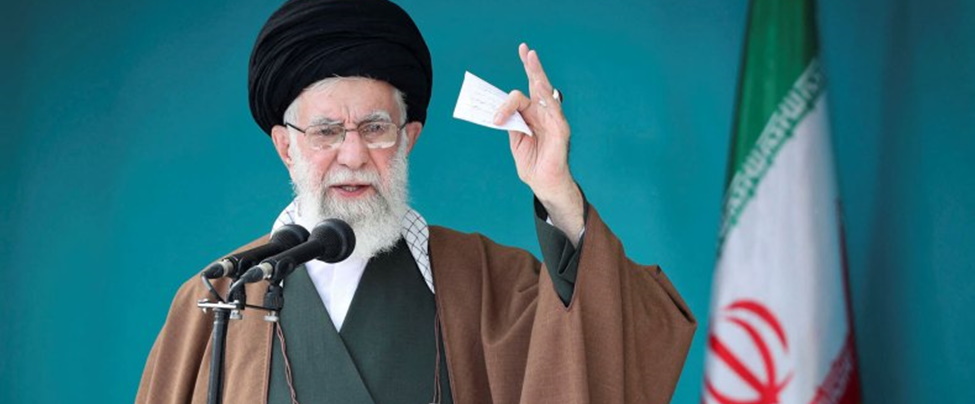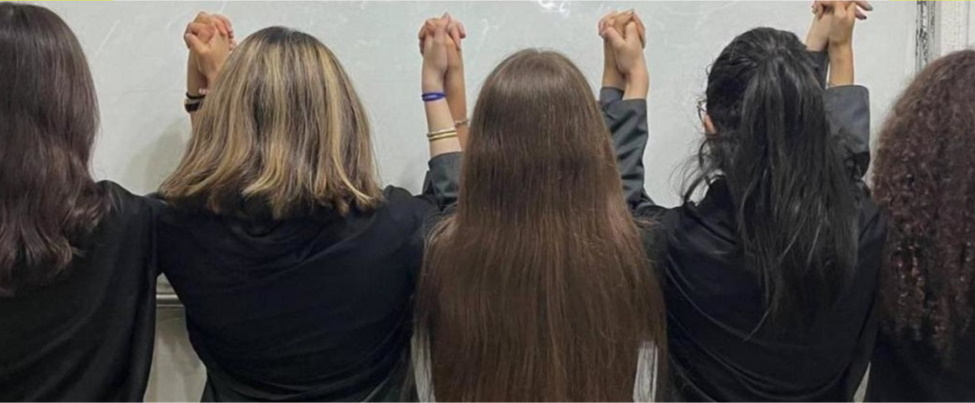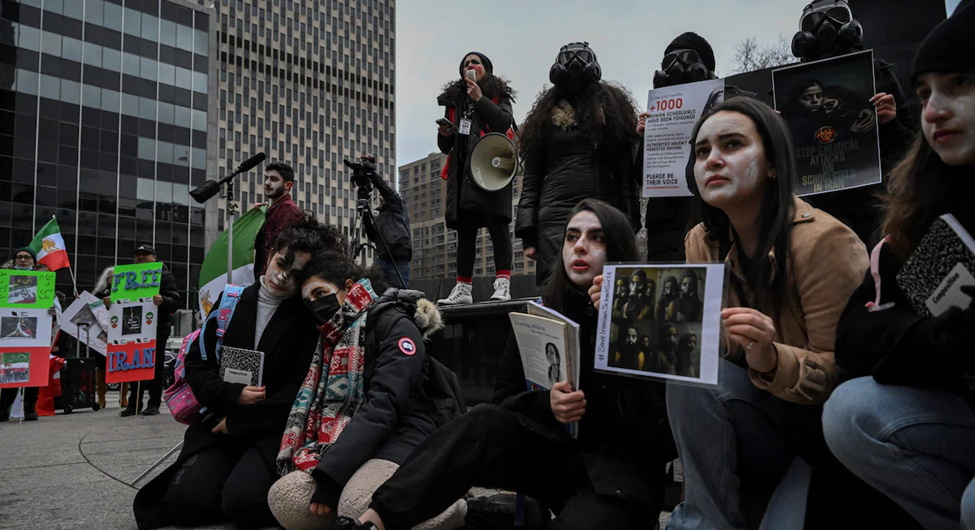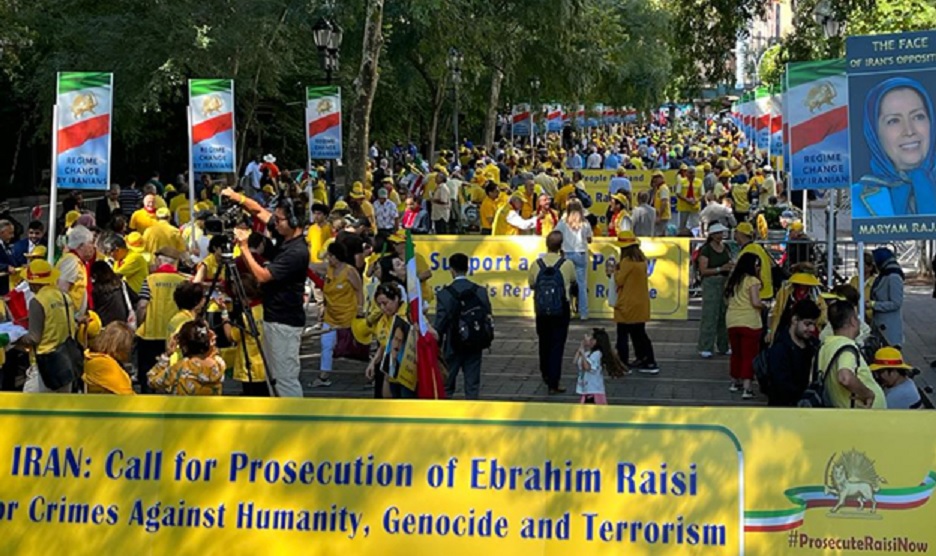National Review | By DAVID ZIMMERMANN | November 14, 2023
Iran has been conducting covert influence operations for years in the U.S. and abroad as part of a concerted disinformation campaign that is suspected to be espionage, a congressional briefing and corresponding report revealed Tuesday.
The 82-page report, titled “Iran: The Ayatollah’s Hidden Hand,” details how supreme leader Ali Khamenei and the Iranian regime use operatives in the Biden administration to influence U.S. policy involving the Islamic Republic, building on a Semafor article that was published in September. At the time, it was reported that at least three Iranian agents transitioned from soliciting Tehran’s talking points to working directly on policy under the purview of U.S. special representative for Iran, Rob Malley. In April, Malley’s security clearance was suspended over his alleged mishandling of classified documents.
“Having been provided with top-level security clearances, these Iranian agents had access to highly classified and sensitive information available only to senior U.S. officials, placing them in a unique position to mislead American policymakers while undermining policy toward Iran’s theocratic regime,” the newly published report states. “The actors allegedly collaborated with and took direction from senior Iranian officials while maintaining the appearance of working on behalf of the U.S. government.”
In addition to swaying foreign policy in favor of Iranian interests, the operatives also worked to subvert favorable opinions of the Middle Eastern nation’s leading opposition group, the Mujahedin-e Khalq (MEK), from Washington, D.C. Iran continues to demonize the MEK to this day, accusing the political group of terrorism primarily for its defiance of Ayatollah Khamenei.
“By brazenly targeting the highly effective dissident organization, the operatives hoped to leave U.S. officials with the false impression that there is no viable alternative to the ayatollahs — and certainly not one with a pro-democracy record that remains committed to toppling clerical rule,” the report adds.
Dr. Ivan Sascha Sheehan, associate dean at the University of Baltimore who authored the report, presented an overview of his findings to select congressmen, foreign policy experts, and the media on Capitol Hill, where he called on both chambers of Congress to organize investigations and hearings into the matter.
“The Iranian regime poses a direct national security threat to U.S. citizens and U.S. security interests,” Sheehan said. “The fact of the matter is that no organization who aligns themselves with a hostile state or serves as a foreign agent should wield influence over U.S. policy or have access to sensitive national security information.”
Representatives Tom McClintock (R., Calif.), Randy Weber (R., Texas), and ambassador Lincoln Bloomfield Jr., the former assistant secretary of state for political-military affairs during the George W. Bush administration, introduced the professor’s research at the briefing.
While lauding the House’s actions to prevent Iran from obtaining nuclear weapons, Sheehan advocated for Congress and decision-makers in Washington to be aware of the tactics that Tehran employs to “advance their broader, geopolitical agenda.” Early this month, the House passed a bipartisan resolution that declares a nuclear-armed Iran is unacceptable under U.S. policy.
Intimidation of U.S. officials is one of the many tactics listed in the book, Sheehan said, noting one of the key endorsers of his report was shot in Madrid, Spain, just five days prior to the Tuesday briefing. Professor and European statesman Alejo Vidal-Quadras, who fortunately survived, has reason to believe the Iranian regime was behind the failed assassination attempt. The Spanish police’s special terrorism unit is currently investigating the matter.
Sheehan posed questions to the audience, wondering whether the Iranian influence operations have officially become efforts of espionage and how much damage the covert campaign has caused.











 to stand with you today against Raisi, against Khamenei, and for freedom for the people of Iran. History is full of examples where regimes that nobody thought would be toppled have been overthrown.” Today he added, “this murderer is speaking to the organization that was founded to protect the peace. The protests are growing. The people of Iran, led by the resistance of Iran, supported by the NCRI and MEK, continue their protests.”
to stand with you today against Raisi, against Khamenei, and for freedom for the people of Iran. History is full of examples where regimes that nobody thought would be toppled have been overthrown.” Today he added, “this murderer is speaking to the organization that was founded to protect the peace. The protests are growing. The people of Iran, led by the resistance of Iran, supported by the NCRI and MEK, continue their protests.” murderer. Raisi wasn’t elected. He was chosen.” He alluded to Iranian regime terror operations in Europe and the U.S. and said, “What is the regime he represents? His government sent a diplomat with a bomb in a diplomatic pouch to plant it in a peaceful gathering to take out lives. Raisi is the head of that regime. That is the person who just spoke to the General Assembly. We are gathered because we will never forget what Iran was and we will never stop fighting for what Iran must become. We say to the world, what is right for Ukraine is right for Iran.” Senator Torricelli directed his remarks at the rulers in Tehran and said, “Joining me today to speak to you is Senator Lieberman and Senator Brownback. To the regime, take note of who they are and what they represent. Democrats and Republicans, we as Americans are united…we are as united for a free Iran as we are for a free Ukraine.”
murderer. Raisi wasn’t elected. He was chosen.” He alluded to Iranian regime terror operations in Europe and the U.S. and said, “What is the regime he represents? His government sent a diplomat with a bomb in a diplomatic pouch to plant it in a peaceful gathering to take out lives. Raisi is the head of that regime. That is the person who just spoke to the General Assembly. We are gathered because we will never forget what Iran was and we will never stop fighting for what Iran must become. We say to the world, what is right for Ukraine is right for Iran.” Senator Torricelli directed his remarks at the rulers in Tehran and said, “Joining me today to speak to you is Senator Lieberman and Senator Brownback. To the regime, take note of who they are and what they represent. Democrats and Republicans, we as Americans are united…we are as united for a free Iran as we are for a free Ukraine.” Governor and Senator said in his remarks, “The people of Iran are rising to claim their rightful place as a free people.” Raisi he said, “doesn’t deserve to address the UN. He deserves to be tried for the crimes he committed against his own people.” He added, “It is time to declare freedom for the people of Iran. That’s what we are for. We declare the end of the dictatorship over Iran. That’s what the people want.” With the growing protest and opposition movement he added, “the boiling point has been reached. The desire for change can no longer be contained.”
Governor and Senator said in his remarks, “The people of Iran are rising to claim their rightful place as a free people.” Raisi he said, “doesn’t deserve to address the UN. He deserves to be tried for the crimes he committed against his own people.” He added, “It is time to declare freedom for the people of Iran. That’s what we are for. We declare the end of the dictatorship over Iran. That’s what the people want.” With the growing protest and opposition movement he added, “the boiling point has been reached. The desire for change can no longer be contained.” of Ukraine and Iran, People of free Iran. During these seven months [since the invasion of Ukraine], there were tough times when we didn’t know if there was hope. During these times, I told myself what Mrs. Rajavi told me: We can and we must.”
of Ukraine and Iran, People of free Iran. During these seven months [since the invasion of Ukraine], there were tough times when we didn’t know if there was hope. During these times, I told myself what Mrs. Rajavi told me: We can and we must.” request that you look at history and see that the policy of appeasement will not stop the mullahs from acquiring nuclear weapons and will endanger the lives of millions of Iranians. We need regime change. Honorable Secretary-General of the UN General Assembly, clean your hands again and again. Because you shook the hands of the murderer Raisi who killed thousands of the best Iranians who stood for freedom. He should be prosecuted, not welcomed to the UN.”
request that you look at history and see that the policy of appeasement will not stop the mullahs from acquiring nuclear weapons and will endanger the lives of millions of Iranians. We need regime change. Honorable Secretary-General of the UN General Assembly, clean your hands again and again. Because you shook the hands of the murderer Raisi who killed thousands of the best Iranians who stood for freedom. He should be prosecuted, not welcomed to the UN.” not the voice of a mourning nation. It is the manifestation of a nation risen for change. This is the result of more than 40 years of persistence and resistance in the toughest of times. It is a resistance movement that has a plan, organization, leadership, and more importantly, has made sacrifices… We mark this year as the year of freedom, resistance, and equality. Our exams will be in the streets and squares of Iran.”
not the voice of a mourning nation. It is the manifestation of a nation risen for change. This is the result of more than 40 years of persistence and resistance in the toughest of times. It is a resistance movement that has a plan, organization, leadership, and more importantly, has made sacrifices… We mark this year as the year of freedom, resistance, and equality. Our exams will be in the streets and squares of Iran.” with Raisi at the “Death Commission” in 1988, said in her remarks, “Last week, we witnessed the brutal murder of Mahsa Amini, who was arrested by the regime on bogus charges of violating hijab rules and killed a few hours later. For years, the regime became more violent. On the other hand, the members of the resistance became more resolute, to the point that the regime became desperate. The regime decided to eliminate the problem from the root.” Today she added, “the regime’s president is one of the key players of the 1988 massacre. It is a shame for the UN that Raisi is here today. But this will be the end of the regime.”
with Raisi at the “Death Commission” in 1988, said in her remarks, “Last week, we witnessed the brutal murder of Mahsa Amini, who was arrested by the regime on bogus charges of violating hijab rules and killed a few hours later. For years, the regime became more violent. On the other hand, the members of the resistance became more resolute, to the point that the regime became desperate. The regime decided to eliminate the problem from the root.” Today she added, “the regime’s president is one of the key players of the 1988 massacre. It is a shame for the UN that Raisi is here today. But this will be the end of the regime.” said, “I am addressing you as a former political prisoner who has been tortured and witnessed the murders committed by Raisi. He is a murderer who has no place among world leaders. He must be arrested and tried for his crimes against humanity. Khamenei appointed him to continue his brutality to suppress protests.” The ongoing uprisings he added, “will overthrow the regime. Hail to all the protesters across Iran.”
said, “I am addressing you as a former political prisoner who has been tortured and witnessed the murders committed by Raisi. He is a murderer who has no place among world leaders. He must be arrested and tried for his crimes against humanity. Khamenei appointed him to continue his brutality to suppress protests.” The ongoing uprisings he added, “will overthrow the regime. Hail to all the protesters across Iran.” a brain drain in Iran. As you know, many students are under the cruelest torture in Iran’s prisons, including Ali Younesi and Amirhossein Moradi. She then decried Mahsa Amini’s senseless murder in the hands of IRGC security forces and said, “But Mahsa is not dead, Mahsa has become the spark for the current uprising for regime change.” She credited Maryam Rajavi and leadership of women in the Iranian resistance with inspiring a new generation of women and girls who lead the movement for democratic and secular republic in Iran.
a brain drain in Iran. As you know, many students are under the cruelest torture in Iran’s prisons, including Ali Younesi and Amirhossein Moradi. She then decried Mahsa Amini’s senseless murder in the hands of IRGC security forces and said, “But Mahsa is not dead, Mahsa has become the spark for the current uprising for regime change.” She credited Maryam Rajavi and leadership of women in the Iranian resistance with inspiring a new generation of women and girls who lead the movement for democratic and secular republic in Iran. about what’s happening in Iran because their issues touch our entire world. It’s an issue of freedom and human rights. The time for change is now. People from many different faiths and religions can unite around this. It is time for the tyrant Raisi to go…We say Maryam Rajavi’s ten-point plan is the path to freedom. All of history teaches us that eventually evil falls and good triumphs. I know that change is coming very quickly in Iran. I believe that we will see very soon see the walls of evil fall and freedom come to the people of Iran.”
about what’s happening in Iran because their issues touch our entire world. It’s an issue of freedom and human rights. The time for change is now. People from many different faiths and religions can unite around this. It is time for the tyrant Raisi to go…We say Maryam Rajavi’s ten-point plan is the path to freedom. All of history teaches us that eventually evil falls and good triumphs. I know that change is coming very quickly in Iran. I believe that we will see very soon see the walls of evil fall and freedom come to the people of Iran.” closer to achieving freedom of equality, freedom of the press, and freedom of religion in Iran. Raisi continues to use execution to silence the majority in Iran. But the uprisings have begun and will not stop until freedom rings in Iran.” He said, “If the US wants stability in the Middle East, it must sit at the table with Mrs. Rajavi. Mrs. Rajavi should be addressing the UN, not Raisi.”
closer to achieving freedom of equality, freedom of the press, and freedom of religion in Iran. Raisi continues to use execution to silence the majority in Iran. But the uprisings have begun and will not stop until freedom rings in Iran.” He said, “If the US wants stability in the Middle East, it must sit at the table with Mrs. Rajavi. Mrs. Rajavi should be addressing the UN, not Raisi.”